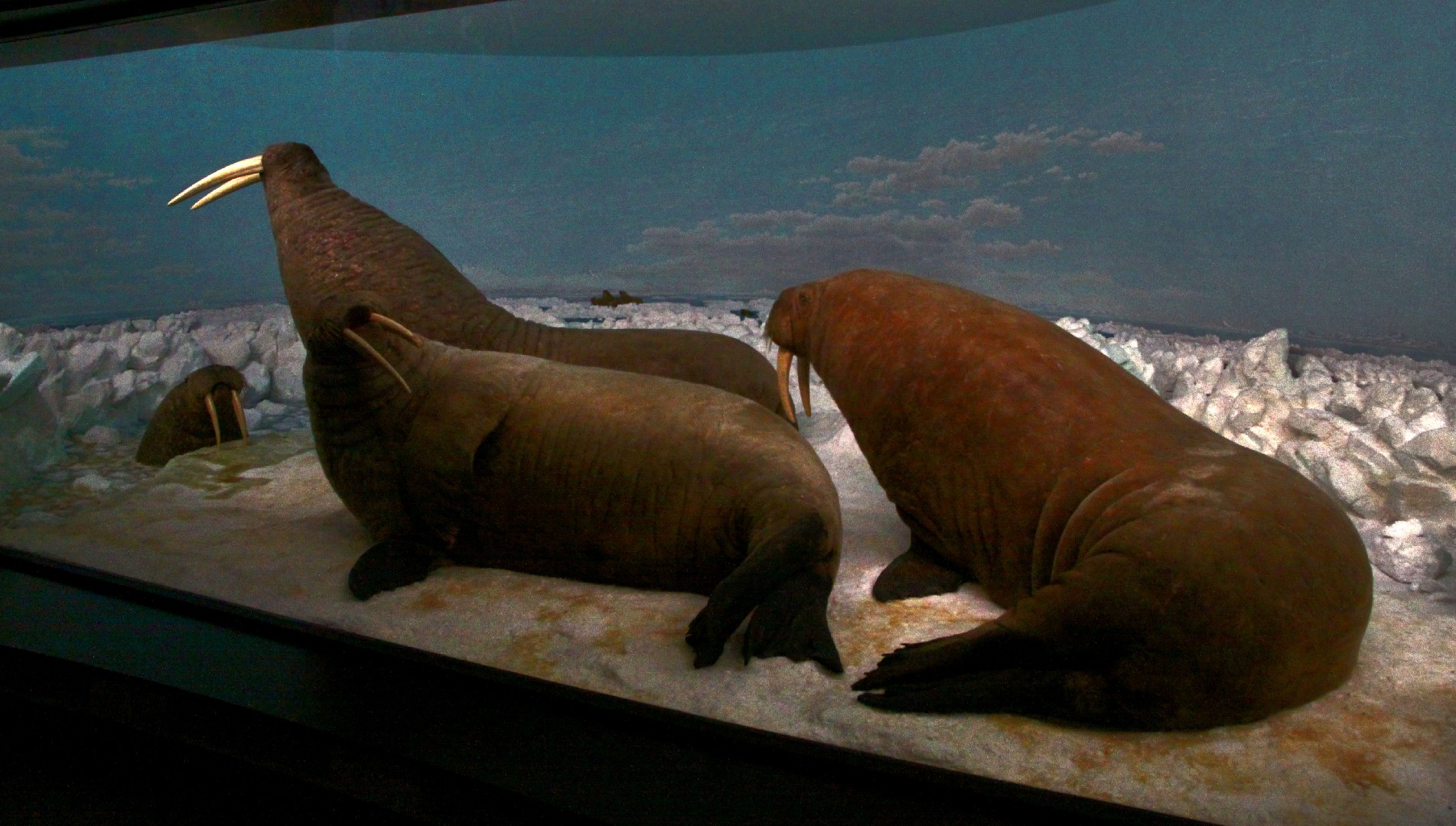Walrus
A species of Walruses, Also known as Atlantic walrus Scientific name : Odobenus rosmarus Genus : Walruses
Walrus, A species of Walruses
Also known as:
Atlantic walrus
Scientific name: Odobenus rosmarus
Genus: Walruses
Content
Description General Info
 Photo By Guillaume Baviere , used under CC-BY-SA-2.0 /Cropped and compressed from original
Photo By Guillaume Baviere , used under CC-BY-SA-2.0 /Cropped and compressed from original Description
The zoological name Odobenus is derived from the Greek ὀδούς .mw-parser-output .Latnodous, German 'tooth', and βαίνω bainō, German 'go', and stems from the observation that walruses move forward on land with their tusks. It was awarded in 1762 by Mathurin-Jacques Brisson in his work Le regnum animale, while the original species name Phoca rosmarus goes back to the Swedish naturalist Carl von Linné, who still considered the real dog seal in his Systema naturae work.
General Info
Lifespan
15-30 years
Diet
Walrus is primarily benthivorous, largely feasting on mollusks, particularly bivalves. They use sensitive whiskers to locate shellfish and its large, powerful tusks to unearth them from the sea floor.
Appearance
Walrus is a large marine mammal with a hefty, barrel-shaped body. Its skin is thick, rough, and darkly colored, while its hairs are sparse and coarse. Its tusk-like canines, which notably protrude in males, are its distinguishing feature. Walrus have large, flappy flippers and a broad, flat tail. There's moderate sexual dimorphism, with males being significantly larger, carrying more pronounced tusks and thicker necks.
Behavior
Walrus is a highly social, aquatic species that typically congregates in large, sexually segregated herds. They spend significant amounts of time on ice floes, engaging in behaviors such as nursing, birthing, and molting. Foraging primarily on benthic invertebrates, walrus dives to great depths, using its whiskers to locate food. Uncommon for most pinnipeds, walrus showcases terrestrial haul-out sites for rest.